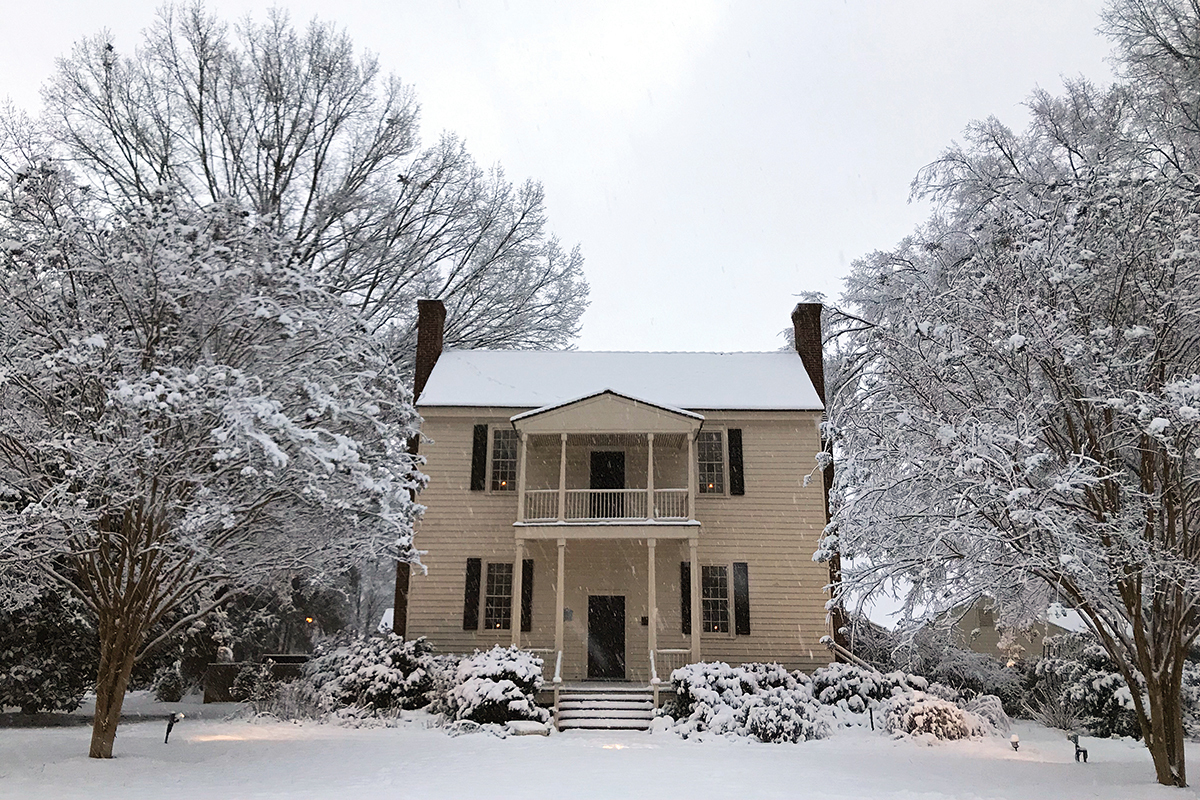Our Heritage
Christmas In A College Town

For 122 years, Wake Forest was both college and town. The two could not be separated for they were truly one. The students were a part of the community and members of the households where they lived or “took” their meals. During most of the 19th century, the traditions of Christmas experienced a revival from Colonial days and grew and evolved into many traditions we hold most dear today. The College recognized Christmas as a holy time and a time for family and social events; however, study and scholarship came first. For the Christmas holiday, the college closed December 24 and 25 only – insufficient time for students who lived any distance away to travel home for the holidays. Nowadays in Winston-Salem, Wake Forest University students are finished with exams and have scattered across the country and the globe for the winter break. Most of them don’t return to their studies until mid-January (at least in non-COVID 19 times). The same is true for colleges and universities all across our area and the nation.
In 1883, the College trustees bowed to the wishes of the student body and expanded the Christmas recess. For the first time, classes would be suspended from December 23 until December 27 – four full days of freedom from lectures, exams, and study. Still, there were a number of students who could not afford to travel the long distance home. In the era before automobiles, even four days did not allow time to venture to areas remote from train service. The tradition of making Wake Forest home for Christmas lived on.
One of best sources for a glimpse into Christmases past is to look at the pages of the Wake Forest Student, a scholarly publication begun in 1882 and still published today as the Wake Forest Magazine by Wake Forest University. The “Christmas” issue of The Student would be filled with ads from local merchants, many with names still recognized today, including Holding, Brewer, and Wilkinson. The balance of the publication was dedicated to poems, reflections, and stories of Christmas. On that first extended break back in 1883, one student sat on the wooden fence that surrounded the campus before Tom Jeffries’ stone wall. He lamented about what he would do during the four-day break and reflected back to the past three Christmases spent in Wake Forest. The previous year, he enjoyed the company of three girls from nearby Oxford who were visiting family in town. The year before, he attended a play in town that he remembered as being so very funny that it uplifted his spirits. He also remembered the free time he spent with “chums” who were in the same situation as he.
In 1903, the publication turned its attention to Santa Claus. Santa was described as “a low, fat man with white whiskers, dressed in furs; a man with sweet, beaming countenance, who came in the dead hours of Christmas Eve night and brought innumerable good things to good children, but left nothing but ashes and switches in the stockings of bad children.”
In 1942, America was at war; college women and soldiers from the Army Finance School were sharing the campus with college men, and new Christmas traditions appeared. Downtown merchants still ran black and white advertisements for the best and newest items for Christmas gifts. The break was still not long, but certainly more than the two or four days from a century earlier. Local cedars were the most common choice for Christmas trees, both on campus and around town. The Christmas “social” became popular among the co-eds. The girls would talk the boys into cutting down a tree, placing it in a makeshift tree stand and the holiday festivities would begin with trimming the tree.
In 1923, the young editor of the Wake Forest Student penned these profound thoughts: “And why not make Christmas mean as much to you now as it did then, when you looked forward to the tree loaded with gifts, the new pop gun, the little red wagon, and at last the bicycle. Do you have a word of cheer for every person you meet? Do you congratulate them upon their successes during the past year? Do you extend to them your very best wishes for the coming year and hope it will be the greatest of their lives?”
May we all consider that young editor’s words and reflect upon Christ-mas past, present, and future. 2020 and COVID-19 have brought us much closer to those days a century ago when college students made the best of Christmas in our town. If nothing else, maybe we have received the gift of more opportunity to reflect on all the things that make us strong as a community.
Ed Morris
Executive director of the Wake Forest Historical Museum & Wake Forest College Birthplace.

